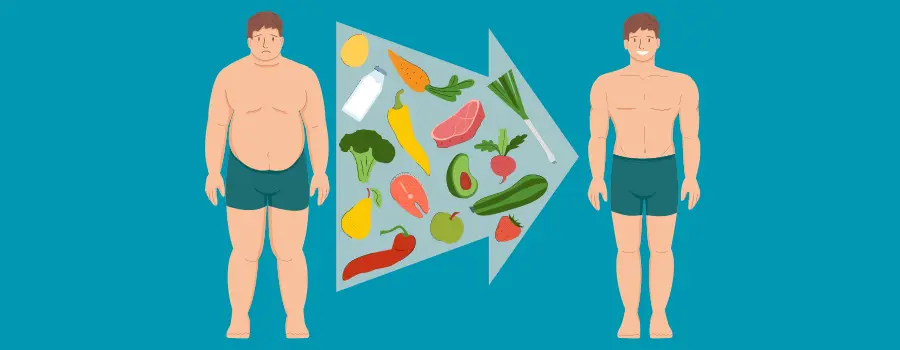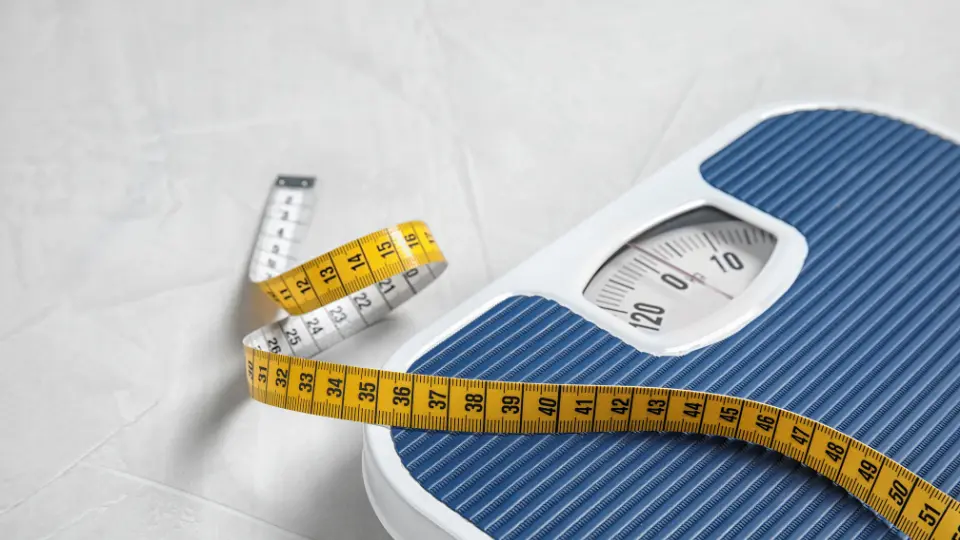Weight Loss vs Fat Loss: Is It the Same?

Weight Loss vs Fat Loss – Have you ever wondered if losing weight and losing fat are the same thing? Many people struggle with weight loss and fat loss, often confused by the terms and what they truly mean. This confusion can lead to frustration and a lack of progress in achieving fitness goals. In this article, we’ll dive into the science behind weight loss and fat loss, explore effective methods for measuring body fat, discuss the impact of hormones, and provide actionable tips for sustainable fat loss.
Understanding Weight Loss vs Fat Loss
What Is Weight Loss?
Weight loss simply refers to a reduction in your overall body weight. This can be achieved through various means, including diet, exercise, and lifestyle changes. However, weight loss doesn’t necessarily distinguish between fat loss, muscle loss, or loss of water weight. Essentially, when you step on the scale, it measures your total weight, which includes fat, muscle, water, and other components.
Related Article: Discover the Best Almond Milk Powder for Your Weight Loss
What Is Fat Loss?
Fat loss, on the other hand, is more specific. It refers to the reduction of fat mass in your body while ideally preserving lean body mass (muscle). Unlike weight loss, fat loss focuses on reducing the percentage of body fat, which can lead to a leaner and more toned physique. To effectively lose fat, you need to create a calorie deficit, where you consume fewer calories than you burn, while ensuring that your diet supports muscle maintenance.
Scientific Backing
A study published in the American Journal of Clinical Nutrition highlights the difference between weight loss and fat loss. The researchers found that while individuals may lose weight through various diets, fat loss is specifically achieved through a combination of diet and exercise that promotes a reduction in fat tissue while preserving lean mass.
Another review in Obesity Reviews discusses how body composition, including fat mass, lean mass, and water weight, affects overall health and metabolism. Understanding these components helps in setting realistic goals and choosing the right strategies for fat loss.

Body Composition Explained
Fat Mass
Fat mass refers to the total amount of fat in your body. It’s an important measure because excess fat can lead to health problems like cardiovascular disease, diabetes, and high blood pressure. Reducing fat mass through a balanced diet and exercise is crucial for improving overall health.
Lean Body Mass
Lean body mass includes muscles, bones, and organs. It’s essential to maintain lean body mass while focusing on fat loss because muscle mass helps boost metabolism and supports physical strength. A higher lean body mass can also make it easier to maintain a healthy weight.
Water Weight
Water weight is the amount of water retained in your body. Fluctuations in water weight can affect the scale reading, but it doesn’t reflect changes in fat or muscle mass. Factors like sodium intake, hydration levels, and hormonal changes can influence water weight.
Practical Tips for Measuring Body Fat
At-Home Methods
- Body Fat Scales: These scales use bioelectrical impedance to estimate body fat percentage. They are convenient but may not always be highly accurate.
- Skinfold Calipers: By pinching and measuring skin folds at specific body sites, you can estimate body fat percentage. It requires practice and consistency for reliable results.
- Tape Measures: Measuring waist, hip, and other body circumferences can provide an estimate of body fat distribution. While less precise, it offers a simple way to track changes over time.
Professional Methods
- DEXA Scans: Dual-energy X-ray Absorptiometry (DEXA) scans provide a detailed analysis of body composition, including fat mass and lean mass. It’s considered one of the most accurate methods.
- Hydrostatic Weighing: This method involves being submerged in water to measure body density. It’s highly accurate but less accessible.

The Impact of Hormones on Weight Loss vs Fat Loss
Hormones and Weight Loss
Hormones play a crucial role in regulating metabolism, appetite, and fat storage. For instance, insulin, cortisol, and leptin influence how your body processes and stores nutrients. Hormonal imbalances can make it challenging to lose weight or fat effectively.
Perimenopause and Menopause
For women, hormonal changes during perimenopause and menopause can affect weight and fat distribution. Decreased estrogen levels can lead to increased abdominal fat and changes in metabolism. Strategies to manage these changes include a balanced diet, regular exercise, and stress management.
Managing Hormonal Imbalances
- Balanced Diet: Consuming a diet rich in whole foods, healthy fats, and lean proteins can support hormonal balance.
- Regular Exercise: Incorporating both cardio and strength training can help regulate hormones and improve body composition.
- Consultation: Seeking advice from a healthcare provider or endocrinologist can help address specific hormonal issues.
Diet Plans and Meal Examples
Fat Loss-Focused Diet Plan
- Breakfast: Greek yogurt with berries and a sprinkle of chia seeds.
- Lunch: Grilled chicken breast with quinoa and a mixed green salad.
- Dinner: Baked salmon with steamed broccoli and sweet potato.
- Snacks: Almonds, apple slices with peanut butter, or a protein shake.
Recipes
- Protein-Packed Smoothie: Blend spinach, banana, protein powder, and almond milk for a nutrient-dense drink.
- Quinoa Salad: Combine cooked quinoa with chickpeas, cherry tomatoes, cucumber, and a lemon-tahini dressing.

Specific Exercises for Fat Loss and Muscle Gain
Exercise Routine
- Cardio: Include activities like running, cycling, or swimming for at least 150 minutes per week.
- Strength Training: Focus on compound exercises like squats, deadlifts, and bench presses. Aim for 2-3 sessions per week.
- High-Intensity Interval Training (HIIT): Combine short bursts of intense exercise with periods of rest to maximize fat loss.
Tips for Different Fitness Levels
- Beginners: Start with basic bodyweight exercises and gradually increase intensity.
- Advanced: Incorporate advanced techniques like supersets, drop sets, and periodization.
Practical Tips for Sustainable Fat Loss
- Stay Hydrated: Drink plenty of water to support metabolism and overall health.
- Get Adequate Sleep: Aim for 7-9 hours of quality sleep per night to aid recovery and regulate hunger hormones.
- Seek Support: Engage with health coaches, dietitians, or support groups for guidance and motivation.
Bottom Line
Understanding the difference between weight loss and fat loss is crucial for achieving your fitness goals. By focusing on fat loss rather than just weight loss, you can improve your body composition and overall health. Implementing practical tips for measuring body fat, managing hormonal impacts, and following a balanced diet and exercise routine will help you on your journey. Remember, sustainable fat loss requires patience, consistency, and a holistic approach to health and wellness.
CTA
Ready to turn your innovative beverage ideas into reality? At CV. Putra Farma Yogyakarta, we specialize in premium contract manufacturing for the latest powdered drink trends. Our services offer a fast, easy, and cost-effective solution for culinary entrepreneurs, ensuring your brand stands out in the market. With our proven track record of helping over a hundred clients from concept to warehouse, we are committed to creating products that benefit the community and elevate your business. Contact us today to learn how we can help you bring your vision to life and achieve your goals in the competitive beverage industry!
Tag: Weight Loss vs Fat Loss



